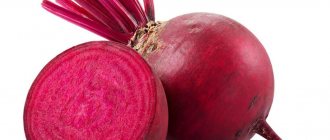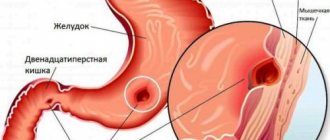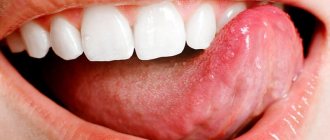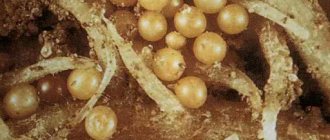Stools are usually brown in color, and significant changes in color may be a cause for health concern. The color of stool is determined by the presence of bilirubin (a breakdown product of hemoglobin) and other bile pigments. Changes in the amount of bilirubin in the bile can change the color of the stool from light yellow to dark brown. In most cases, changes in the color of stool are associated with dietary habits and are not a symptom of any health abnormalities.
Normal indicators
Feces have their own generally accepted characteristics, which indicate that everything is in order with health. This may not be the most pleasant topic, but everyone should know the parameters of a chair.
- Color
. In healthy people whose menu includes a variety of foods, stool has a color ranging from yellowish to dark brown. Of course, this parameter varies depending on the type of food consumed at one time or another, but in general there should not be any unusual color. - Consistency
. Normally, the stool is formed, moderately dense, it should come out easily during defecation and resemble a sausage in shape. If the stool looks like a cluster of small balls or, on the contrary, is too liquid, this is already a deviation from the norm. - Number of bowel movements
. With well-established digestion and moderate nutrition, bowel movements should occur 1-2 times a day. This is the optimal number of times at which stool does not stagnate in the intestines. Emptying is allowed once every 48 hours, but not less often. The number of bowel movements may change due to stressful situations or painful conditions, but after that everything should return to normal. - Amount of feces
. If the diet is balanced and a person does not overeat, then the daily norm of feces is from 120 to 500 g, depending on age and the type of food consumed. If the menu contains more plant foods, the amount of feces increases, if meat and dairy, on the contrary, decreases. - Stool smell
. Usually unpleasant, but not too harsh. It depends on the type of food consumed, the nature of digestion, the presence of beneficial bacteria in the intestines and the necessary enzymes. So, if meat products predominate, the stool has a sharper odor, dairy foods give a characteristic sour smell. If food is not completely digested, it begins to rot and ferment. The number of bacteria feeding on it increases and they produce corresponding substances that have an unpleasant odor, such as hydrogen sulfide. - Stool acidity
. An indicator that is established in laboratory conditions, but is also extremely important. Normal pH is 6.7-7.5 and depends on the intestinal microflora.
Some people have individual fecal characteristics associated with congenital anomalies, pathologies, or lifestyle (for example, vegetarians). If in general nothing worries you, then there is no need to fear for your health.
Laxative effect
Often, after eating beetroot dishes, red, liquid stools may occur. This manifestation usually frightens a person, because it is very reminiscent of diarrhea with blood, which can be a sign of dangerous diseases.
However, there is no need to worry ahead of time. It must be remembered that this vegetable has laxative properties. This is also due to the chemical composition of beets. The product is rich in fiber, which activates the intestines and enhances peristalsis. Therefore, moderately frequent bowel movements are natural. If at the same time a person’s health does not deteriorate, there is no abdominal pain and nausea, then an increase in bowel movements can be considered normal.
For this reason, doctors do not recommend consuming this vegetable if you are prone to diarrhea. But it can be very useful if you have difficulty bowel movements. Experts recommend a recipe made from beets with sunflower oil as a folk remedy for constipation.
However, even people who do not suffer from diarrhea should eat this vegetable in moderation. Eating beetroot dishes in large quantities can lead to intestinal upset.
Deviations from the norms and their causes
Comparative characteristics of the color of feces and the reasons that cause it.
| Color | Causes |
| · taking certain medications (for example, activated carbon, medications containing iron); alcohol abuse; · presence of coloring products in food (blueberries, blackberries, black grapes, prunes); · stomach ulcer or bleeding in the gastrointestinal tract. | |
| · insufficient absorption of nutrients entering it by the intestine; · low amount of fiber in the diet and predominance of fats; · liver diseases. | |
| · consumption of coloring products (for example, beets); · use of medications containing vitamin A or the antibiotic “Rifampicin”; · presence of ulcers, tumors, polyps in the gastrointestinal tract; · presence of parasites in the intestines. | |
| · eating a lot of green foods; · taking herbal preparations and dietary supplements; · dysbacteriosis; · dysentery; · acute colitis; · irritable bowel syndrome; · reduction of bile salts in bile. | |
| · consumption of products with yellow dye; · violation of fat absorption; · Gilbert's syndrome, as a result of which bilirubin accumulates in the blood due to a malfunction of the liver; · disruption of the pancreas. | |
| · consumption of products with orange dye; · blockage of the bile ducts; · use of certain medications, excess multivitamins. | |
| · lack of bile in the intestines; · ulcerative colitis; putrefactive dyspepsia; · taking medications with calcium and antacids; · X-ray examination using a dye (barium sulfate). | |
| · intestinal bleeding; · haemorrhoids; · anal fissures; · intestinal cancer. |
Photo
We described above how beets affect the feces of adults and children, now we will see this more clearly in the photo.
When to sound the alarm?
When stool has an unusual color, it is impossible not to pay attention to this problem. First of all, you should try to adjust your diet and change your diet, and also carefully analyze what the person consumed the day before. If the color of stool has changed, the reasons may be different, so it is important to exclude the development of a disease in the body. When, after the diet changes, the color of the feces also changes, we can say that the reason was hidden in the diet. In any other cases, you should consult a doctor.
It is necessary to pay attention to other symptoms that may accompany the disease, for example, nausea, vomiting, and fever. A change in the color of feces is just a symptom that may indicate a serious illness, and a doctor can make an accurate diagnosis and prescribe the only correct treatment. Therefore, after detecting the above symptoms, consultation with a specialist is required.
When diagnosing the causes of light-colored stool, your doctor will ask about your symptoms, general health, and medications you take. If the cause is not clear from the initial examination, the doctor will request tests and tests:
- Blood tests to check for infection.
- Computed tomography (CT) scan to check the liver and bile ducts.
- Magnetic resonance imaging (MRI) to obtain all the details of the biliary system.
- Abdominal ultrasound to check all internal organs.
Extraintestinal signs
Intestinal signs are often ignored by patients. They attribute them to overwork, poisoning, eating stale food or acclimatization. Extraintestinal manifestations include:
- sudden weight loss;
- joint pain;
- severe weakness;
- loss of appetite.
There may be an unreasonable increase in temperature, allergic rashes or other skin lesions. Often serious illnesses are accompanied by psycho-emotional disorders from tearfulness and irritability to insomnia. These include bleeding gums, pain in the tongue, and a feeling of loose teeth.
If external signs are detected, it is necessary to undergo an examination.
Extraintestinal signs can come to the fore, be activated more often than intestinal ones, and appear evenly. According to the recommendations, you should sound the alarm only after two to three days of extraintestinal and intestinal manifestations. Separately, each phenomenon can be dictated by an ordinary malfunction in the body.
What diseases change the color of stool?
The most common diseases that change the color of stool.
- Biliary dyskinesia
. With this disease, the secretion of bile from the gallbladder becomes difficult due to a decrease in its contractility. Accordingly, bile enters the duodenum in smaller quantities, and the color of the stool becomes lighter. - Bend of the gallbladder
. This problem is accompanied by decreased motility of the gallbladder and ducts. As a result, the organ, important for good digestion, works less productively, bile acids are supplied to a minimum, causing a light color like an adult. - Gallstones
. The presence of stones changes the way the bladder produces and secretes bile. As in the previous case, the secretion of bile in humans decreases. Along with acute symptoms, light-colored stools appear. - Blockage of the bile ducts
. The delivery of bile from the gallbladder to the duodenum is partially or completely stopped. - Cholecystitis
. With cholecystitis, inflammation of the gallbladder occurs, which significantly reduces the amount of bile secreted. - Hepatitis
. This inflammatory liver disease significantly affects the quality of digestion, worsening the general condition of the body and the lightening of feces. - Pancreatitis
. Inflammation of the pancreas threatens the gastrointestinal tract with digestive problems, since this organ secretes important food enzymes. - Crohn's disease
. This is inflammation of any part of the gastrointestinal tract, which is characterized by a disorder of the digestive processes. - Cancers of the gastrointestinal tract
. Tumors and similar cancerous processes in the intestines can appear almost asymptomatically. Light-colored stool may be the only symptom that you can pay attention to. - Infection with helminths
. In this case, white particles and larvae can be observed in the feces. Their number depends on the degree of intestinal infection.
Vegetable composition
Let's consider the chemical composition of beets. This vegetable contains many useful substances. It is rich in vitamins A and C and microelements (iron, zinc, potassium, manganese), as well as fiber. These compounds activate the intestines, remove toxins from the body, and help strengthen blood vessels.
Beets contain a coloring substance - betanin. It is this that gives the vegetable its rich dark red color. In addition, betanin is a good remedy for the prevention of malignant tumors. However, this substance can turn human feces dark.
Patients often ask: “Is red stool after beets normal or not?” The answer to this question will depend on how long the color lasts. It is also necessary to take into account accompanying symptoms.
Methods of treating pathology
Before starting any treatment, it is important to find out the reason that caused the darkening of the stool:
- When the body is poisoned, drug therapy involves taking medications whose action is aimed at reducing the harmful effects of toxins on the body. When the first signs of poisoning appear, the patient must take activated charcoal and Smecta, and be sure to call a doctor.
- If the cause of black stool in a person is a disease such as colitis, treatment is carried out with the help of adsorbents, antibacterial drugs and agents that eliminate spasms. If there is bleeding in the digestive system, treatment with tablets will not bring a positive effect and usually requires the help of a specialist. Self-treatment of pathologies such as diverticulitis and stomach ulcers can be extremely dangerous and additional complications may occur.
- If the change in stool color is caused by taking medications or vitamins, then no special treatment is required. If a child’s stool darkens, it is necessary to analyze his entire diet, that is, remember all the foods he has eaten over the past few days.
Gastroenterologists say that you should not hesitate to visit a doctor. If the appearance of dark stool has nothing to do with eating a certain food, then you should visit a doctor immediately if black streaks or dots appear in the stool. There is no need to wait for clear manifestations of gastric or intestinal bleeding, because at an early stage of the disease it is much easier to cure it.
Feces are waste products of the body that are removed from the lower parts of the colon during the act of defecation. Feces act as a kind of indicator of human health. A change in the shape, color, or consistency of stool may be normal or indicate the development of diseases, primarily of the digestive tract.
Suspected diseases
If the stool is reddish or dark in color not due to vegetable pigments, then this is usually due to bleeding from the gastrointestinal tract. If the pathology occurs in the colon or rectum, the feces become red. If bleeding occurs in the upper intestines or stomach, the stool is black.
Bleeding can occur with the following gastrointestinal diseases:
- ulcerative processes;
- colitis;
- tumors;
- dilation of veins;
- hemorrhoids;
- rectal fissures;
- infectious pathologies (dysentery, amoebiasis).
The appearance of blood in the urine is also an alarming symptom. This may be a manifestation of the following pathologies:
- urolithiasis;
- pyelonephritis;
- glomerulonephritis;
- kidney injuries;
- poisoning with salts of heavy metals.
Such diseases require immediate treatment. Therefore, it is not always necessary to associate the color of urine and feces only with the consumption of pigmented vegetables and berries.











